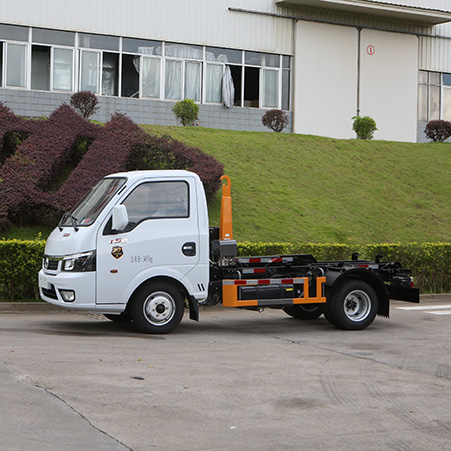Dustbin trucks, also known as garbage trucks or refuse trucks, are the unsung heroes of waste management. These vehicles play a crucial role in collecting, compacting, and transporting waste, ensuring the cleanliness and hygiene of our communities.
Imagine a world without dustbin trucks – overflowing bins, littered streets, and compromised public health would be inevitable consequences. Dustbin trucks streamline the process of waste collection, making it efficient and organized. By promptly removing waste from residential and commercial areas, they mitigate the risk of pollution, disease spread, and unsightly surroundings. Without these vehicles, the management of municipal solid waste would be a logistical nightmare.

What is a Dustbin Truck?
Dustbin trucks are specialized vehicles designed for the collection, transportation, and disposal of waste materials. They come in various types, each tailored to specific collection needs and environments.
Types of Dustbin Trucks
- Rear Loader: These trucks feature a rear-mounted compactor that lifts and empties waste bins into the storage compartment at the back.
- Front Loader: Front loader trucks use hydraulic arms to lift and empty large dumpsters or commercial bins into the front-mounted compactor.
- Side Loader: Side loader trucks have a mechanical arm on the side that lifts and empties bins into the onboard compactor, making them ideal for narrow streets and alleyways.
Components of a Dustbin Truck
- Hopper: The opening at the rear or side of the truck where waste is loaded.
- Compactor: Mechanism for compressing waste to maximize storage capacity.
- Hydraulic System: Powers the lifting and compacting functions of the truck.
- Storage Compartment: Area where compacted waste is temporarily stored before disposal.
How Does a Dustbin Truck Work?
The operation involves the collection of waste from bins or containers, lifting and emptying them into the truck, compacting the waste to maximize space, and transporting it to the disposal site.
- Waste Collection: Workers load bins or dumpsters onto the truck using manual or automated methods.
- Compaction: The compactor crushes and compresses the waste to reduce its volume, maximizing the truck’s capacity.
- Transportation: Once filled, the truck transports the compacted waste to landfill sites, recycling centers, or transfer stations for further processing or disposal.

Dustbin Trucks Safety Measures
Dustbin trucks are equipped with safety features such as cameras, warning lights, and reversing sensors to protect both the workers and the public. Security measures also include:
- Training for operators on proper handling and maintenance procedures.
- Installation of safety features such as backup cameras, alarms, and reflective markings.
- Adherence to traffic regulations and guidelines to prevent accidents on the road.
Dustbin Trucks Environmental Impact
While essential for waste management, dustbin trucks can have environmental consequences such as emissions and fuel consumption. Modern dustbin trucks are designed to be more fuel-efficient and are increasingly using alternative fuels to reduce emissions and environmental impact.
Conclusion
Dustbin trucks are indispensable assets in the realm of waste management, facilitating the efficient collection and disposal of waste materials. With their diverse types, essential components, and meticulous operation, these vehicles ensure the cleanliness, health, and sustainability of our communities.
Dustbin Trucks FAQs
- Are dustbin trucks only used for household waste?
No, dustbin trucks are also utilized for commercial and industrial waste collection, depending on their type and capacity. - How often are dustbin trucks emptied?
The frequency of dustbin truck emptying depends on factors such as the volume of waste generated, the size of the community or area served, and local regulations. Typically, residential areas may have scheduled collections once or twice a week. - Can dustbin trucks handle recyclable materials?
Yes, certain types of dustbin trucks, such as front loaders and side loaders, are equipped to collect both general waste and recyclables. This promotes sustainable waste management practices by facilitating the separation and recycling of materials. - What is the lifespan of a dustbin truck?
The lifespan of a dustbin truck varies depending on factors such as maintenance, usage, and environmental conditions. On average, a well-maintained dustbin truck can last anywhere from 5 to 10 years or more. - How are dustbin trucks contributing to recycling efforts?
Dustbin trucks play a crucial role in recycling efforts by collecting recyclable materials such as paper, plastic, glass, and metal. Many municipalities have implemented dual-stream or single-stream recycling programs, allowing dustbin trucks to separate recyclables from general waste during collection. This promotes sustainable waste management practices and reduces the strain on landfill capacity.






